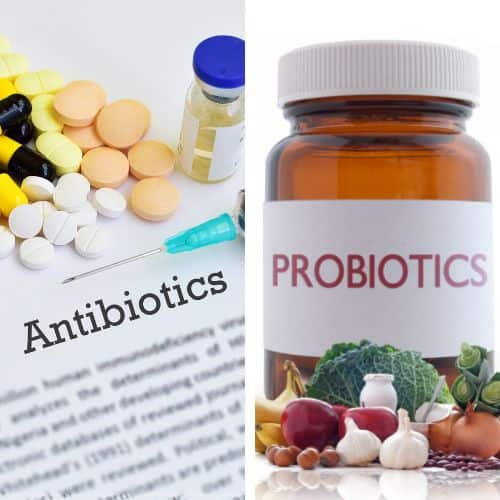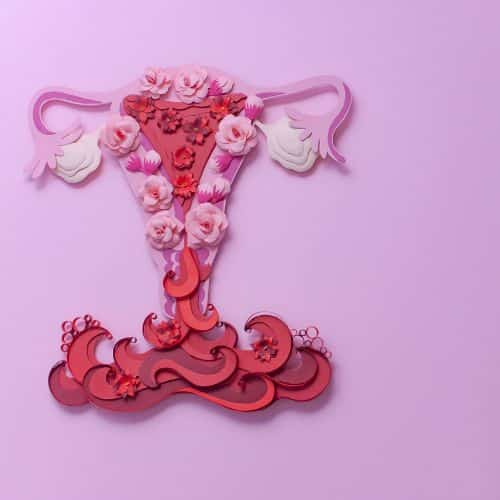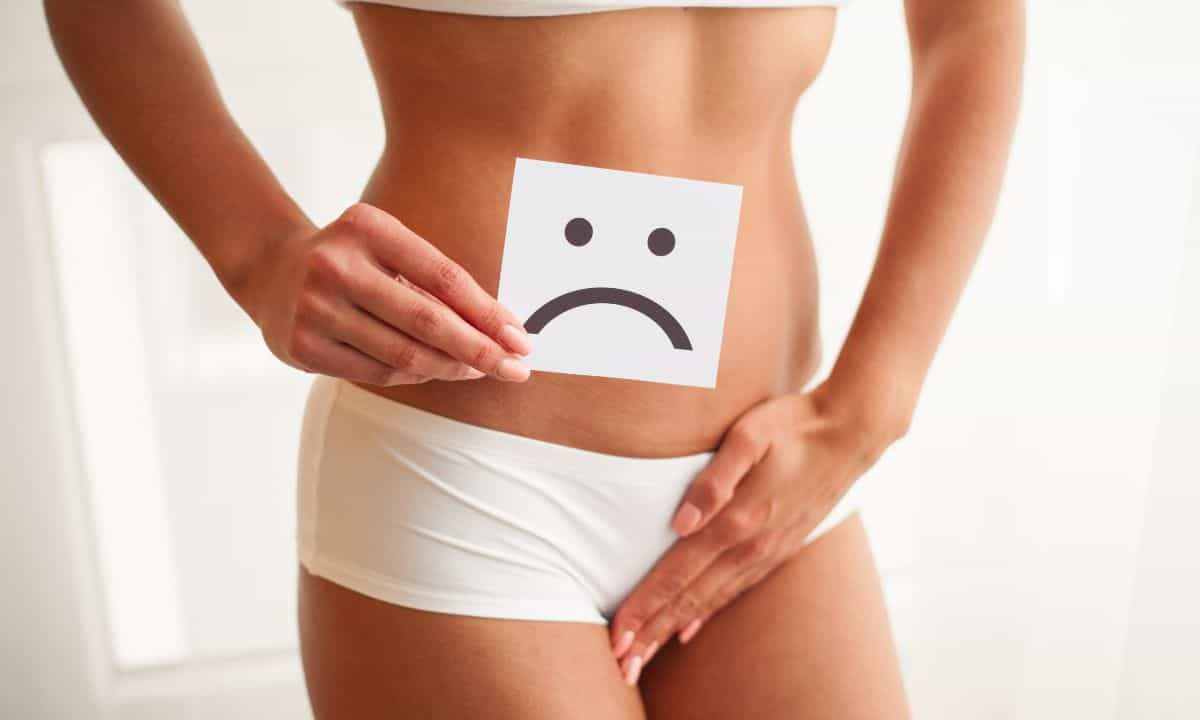Best Probiotics for BV (Bacterial Vaginosis)
It’s no secret that probiotics are good for you. In fact, they’re frequently called ‘good’ bacteria because they help keep your gut healthy.
Table of Contents
ToggleBut did you know that certain types of probiotics can also help prevent and treat vaginal infections?
That’s right—some probiotics can actually help keep your lady parts healthy! And when it comes to preventing and treating bacterial vaginosis (BV), there are certain strains of probiotics that seem to be particularly effective.
Probiotics are especially effective for recurrent BV.
What is BV?
Bacterial vaginosis—or BV—is an infection resulting from the overgrowth of vaginal bacteria. At the same time the negative bacteria grows, there is a decreased amount of vaginal lactobacilli (good bacteria).
The presence of vaginal lactobacilli is integral to maintaining a healthy pH in the vagina, and a decreased level allows for the overgrowth of anaerobic bacteria. This leads to bacterial vaginosis. This disorder can cause uncomfortable symptoms, such as itching, burning, foul-smell vaginal odor, and abnormal discharge.
BV is one of the most common causes of vaginal discomfort in women of childbearing years and in perimenopause.
Symptoms
Symptoms can include:
- A smelly discharge that is often thin, white, gray, or greenish
- Foul-smelling vaginal odor (often described as fishy)
- Itching around the vulva and vagina
- Burning when urinating
If these symptoms sound familiar, keep on reading.
Medical Treatment for Bacterial Vaginosis

BV might resolve by itself in up to 30% of cases. However, many women need a round of antibiotics.
Current treatments include oral antibiotics in addition to intravaginal antibiotics. However, even after such treatment, recurrence is as high as 40-50% in the first year.
The other issue is that antibiotics often create an imbalance between good and bad bacteria in the gut. For that reason, t’s a common practice in the medical community to recommend probiotics when taking antibiotics.
Additionally, one of the major challenges in the treatment of BV is to restore the balance in the vaginal microbiota.
So, what’s a woman to do? Thankfully, there are options. Research has found that certain probiotics can help to rebalance the vaginal flora and reduce symptoms of bacterial vaginosis.
Best Probiotic for BV
According to research, probiotics can be effective in treating and preventing the recurrence of BV. They can be used alone or in addition to medical treatment.
Lactobacillus Rhamnosus and Lactobacillus Reuteri

In healthy women, the vagina’s microbiota is mostly composed of Lactobacillus species. Particularly, Lactobacillus rhamnosus helps prevent bad bacteria and yeast from flourishing, keeping the vagina healthy.
It’s not surprising that the Lactobacillus rhamnosus strain is often studied, as it has been proven effective for women’s well-being. It has benefits in the treatment and recurrence of both bacterial vaginosis and urinary-tract infections.
For example, a study showed that the combination of L. rhamnosus with L. reuteri can replenish the normal vaginal flora. The study was relatively large, including 544 women diagnosed with vaginal infections. Participants received the probiotics or a placebo.
These results are encouraging; 243 women achieved balanced vaginal microbiota compared to only 40 in the placebo group.
Probiotics worked!
Lactobacillus Acidophilus, L. Rhamnosus, and L. Fermentum
Clinical studies show that using vaginal Lactobacillus acidophilus for 6-12 weeks or oral L. acidophilus or L. rhamnosus and L. fermentum for two months cured BV and/or reduced recurrences.
Probiotics for Preventing Recurrence

Vaginal Probiotics
Lactobacillus Crispatus
A study showed that probiotics taken after a round of antibiotics can reduce the recurrence of BV. It also can increase the length of time between recurrences.
Participants took the probiotic L. crispatus for four menstrual circles after taking antibiotics. The placebo group reported a 41% recurrence of bacterial vaginosis. In contrast, there was only 21% recurrence in the probiotic group. The difference is considered very significant.
The probiotic was taken vaginally.
Lactobacillus Acidophilus and Lactobacillus Rhamnosus
The combination of these probiotic strains, in combination with antibiotics and lactoferrin, also proved successful against the recurrence of BV.
The women in this study had recurrent bacterial vaginosis. The treatment group started taking probiotics along with antibiotics for seven days. Then, they took probiotics daily for 10 consecutive days each month for six months, starting the first day of the menstrual cycle.
Recurrence rates were significantly lower in the group taking probiotics compared to the control group (those not taking the probiotics).
L. Fermentum and L. Plantarum
A small study used a combination of these probiotics. In week one, participants used a vaginal tablet daily. For the next three weeks, they used one tablet every three days. The following month, they used one tablet per week.
This treatment also resulted in less recurrence.
Oral Probiotics
Oral probiotics can also help restore normal vaginal flora. However, chances are that vaginal types are more effective.
A review of studies shows that using oral probiotics can help in the treatment of BV and prevent recurrence. Oral probiotics can also impact gut health, the immune system, and more.
Probiotics Available Over the Counter
We looked for probiotics containing the strains listed above with the following results.
Vaginal Probiotics
Metagenics creates top-quality products, and their probiotic contains Lactobacillus rhamnosus and Lactobacillus reuteri strains.
Jarro-Dophilus Women combines the prevalent probiotic strains naturally found in a woman’s body to restore vaginal flora. Strains include L.crispatus, L. gasseri, and L. rhamnosus.
Please note that these suggestions do not represent medical advice. It’s always best to consult with your healthcare provider to determine your specific needs.
Also, as an Amazon affiliate, I earn a commission for each qualifying purchase.
Oral Products
This probiotic contains Lactobacillus rhamnosus. This brand is also known for its quality products and is frequently used by functional medicine healthcare professionals.
This option is made with a blend of probiotic strains to help balance a healthy vaginal pH. The blend includes Lactobacillus acidophilus, L. reuteri, and L. rhamnosus.
Side Effects of Probiotics
Probiotics are generally considered safe for most people, but there are some potential side effects to consider.
Although rare, some people may experience mild digestive symptoms such as gas or bloating after taking probiotics. Other possible side effects include headaches, constipation, and skin rashes. In very rare cases, probiotics can cause an allergic reaction in those with a weakened immune system.
It’s important to talk to your doctor before taking any form of probiotic supplement if you have any underlying health conditions or take medication regularly.
BV vs Yeast Infections
If you think you may have a vaginal infection, you may be wondering if it’s bacterial vaginosis (BV) or a yeast infection.
Both are common—BV affects about 1 in 3 women and yeast infections affect about 3 in 4—but they can have very different symptoms.
With BV, a woman may experience discomfort, itching, burning, and an unpleasant odor from her vagina. Also, while the discharge can be thin and milky in color, it may also appear grayish-white or greenish.
On the other hand, with a yeast infection, a woman may experience itching and irritation of the vulva along with pain during intercourse or urination. The discharge is usually thick and white with an appearance that has been likened to cottage cheese. Additionally, the labia of the vulva will typically look red and swollen due to inflammation. Ultimately if you’re feeling any discomfort down there, it’s best to get checked out by your doctor straight away; they will help diagnose your issue correctly and offer treatment options to help relieve your symptoms.
The Bottom Line
Ultimately, the best probiotic for BV will depend on your specific needs and health goals. While there are many over-the-counter options available to support vaginal flora balance, it’s important to consult with a healthcare professional before taking any supplement or medication.
Additionally, if you experience discomfort in your lower region, be sure to get checked out by a doctor as soon as possible, as they can help diagnose and treat the issue correctly. With proper care and treatment, you’ll be feeling better soon!

Dr. Su-Nui Escobar, a Registered Dietitian/Nutritionist in Miami, FL, is dedicated to empowering women in perimenopause and menopause to live healthier, more satisfying lives.
With a doctorate in clinical nutrition from the University of North Florida, she has expertise in menopause and weight loss, including the unique challenges faced by those on weight loss medications.
Su-Nui’s passion for her field is evident in her previous role as the Academy of Nutrition and Dietetics spokesperson.







